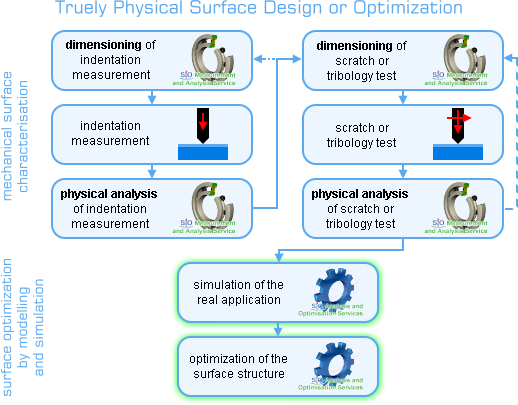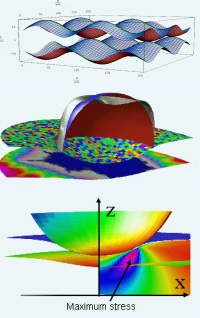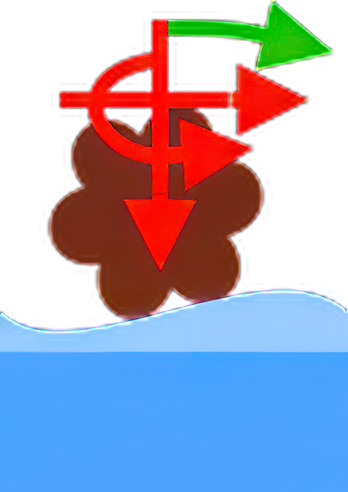Due to the exact examination of the “contact problems” of your product during the application (for example: typical operating conditions), we are able to provide you with useful information and hints concerning the product’s surface design or optimization.
As each component, every paint and even nearly any object in general is exposed to different mechanical loads and contacts, the application conditions need to be determined exactly in order to be able to give satisfiable warranties and to predict reliably the life-span of a product.
Thus, we analyze the everyday and extreme loading conditions to which your product is subjected and finally we therefore develop mathematical models that shed light on its optimal surface design (e.g.: coatings) – Permit us to calculate so that you can save intricate experimental testing and expensive test series.

“If you always wonder why your coating seems so shy. Shows fractures quick and fast or delaminates at last. Then might it help to win if you throw a model in.”

- Analysis of your product’s mechanical properties
- Geometrical construction of surface structures of your products
- Precise investigation of your product’s operating conditions
- Determination of physical boundary conditions in the “worst case” application
- Evaluation of critical parameters
- Determination of the optimal surface structure
- Calculation of the complete stress field
- Support and assistance in determining warranties and proper user instructions
Supported Material Structures
For simulation purposes we can model the following surface structures among others:
- multi-layer coatings (up to 100 layers)
- thin films (theoretically down to 1 angstroem*)
- thick films (theoretically unlimited*)
- with gradients (functionally graded coatings)
- with intrinsic/thermal stresses and gradients of it (functional)
- laminate structures
- composites
- nano-particle-enhanced coatings (nanotubes, fullerenes, …)
- inclusions and defects not only within layers but also at interfaces
- superlattice
- homogeneous monolithic bulk materials (e.g. substrate only)

With regards to measurement analysis it pratically depends on capabilities (e.g. the resolution and noise floor) of your measurement instrument.
Supported Contact or Load Conditions
Among others, the following application conditions or effects can be taken into account for the modeling of complex load or contact situations of the real application by us:
- multi-axial loads (normal, lateral, and rotating loads)
- tilting and deflection of the counterpart
- actual shape of the counterpart, such as edges and asymmetries[?]
- surface roughness, actual three-dimensional surface topography and surface curvature (e.g. from 3D pre-scan by AFM), respectively
- creep / sink-in: time-dependent material properties of viscous or visco-elastic materials (e.g. polymers)
- pile-up / residual stresses of ductile materials, plastic deformation, fractures/cracks of brittle materials[?]
- friction between surface and counterpart
- temperature gradients / fields (e.g. necessary for high temperature applications)
- weak interfaces / poor interface adhesion

Mail: info@siomec.de